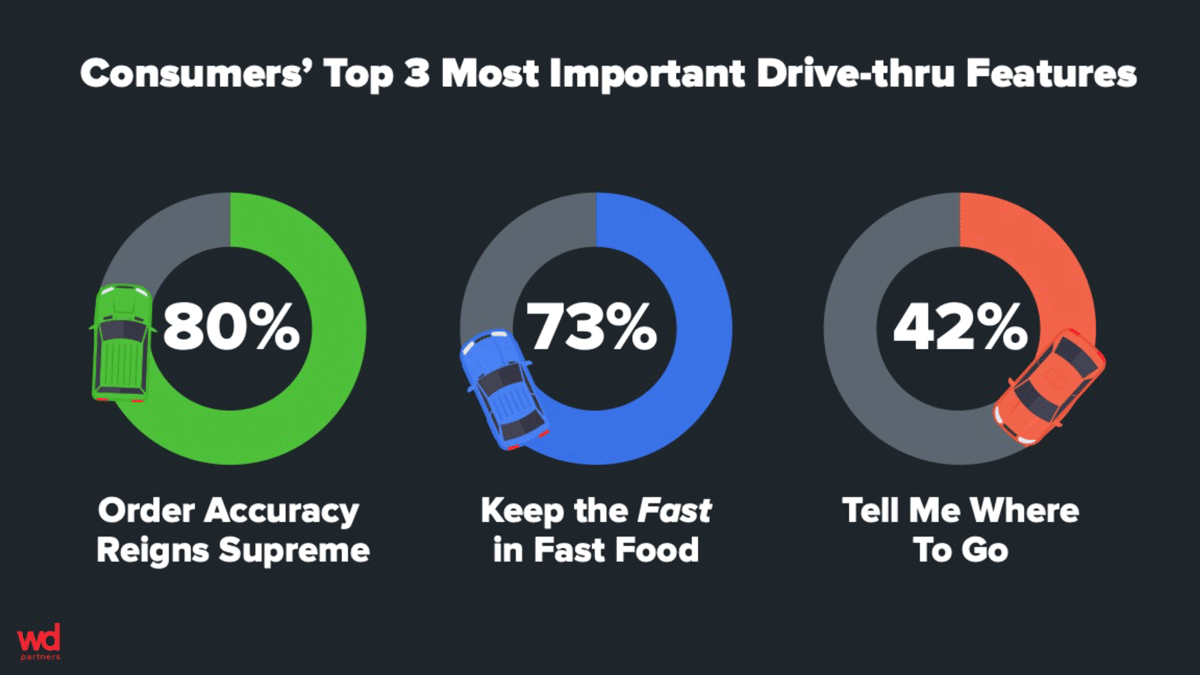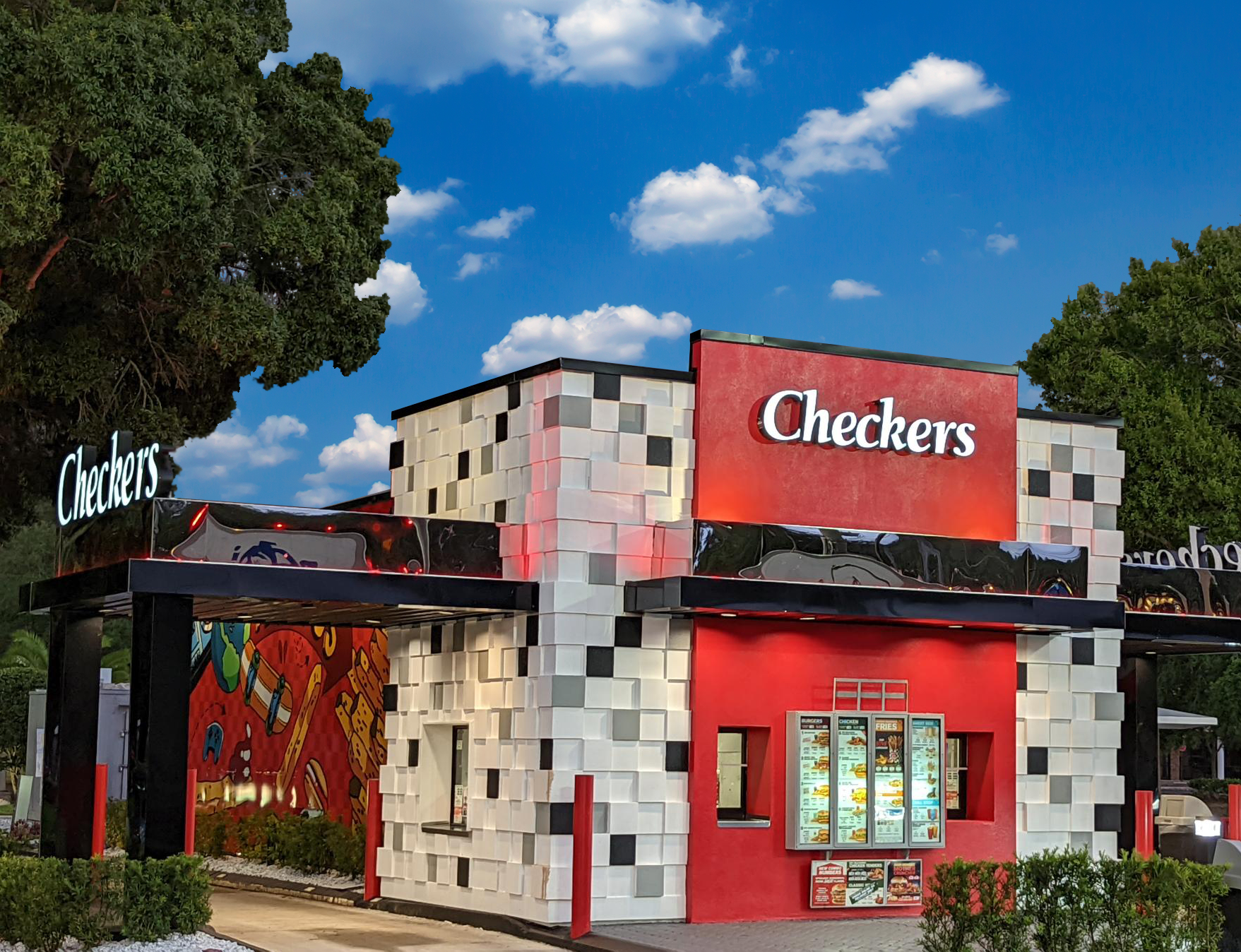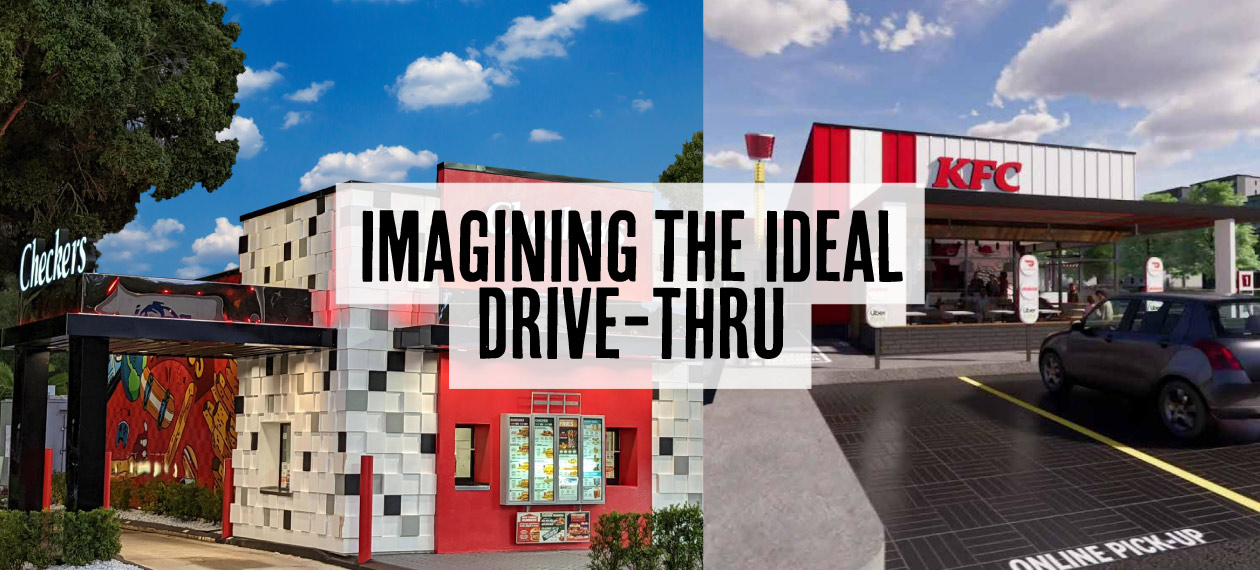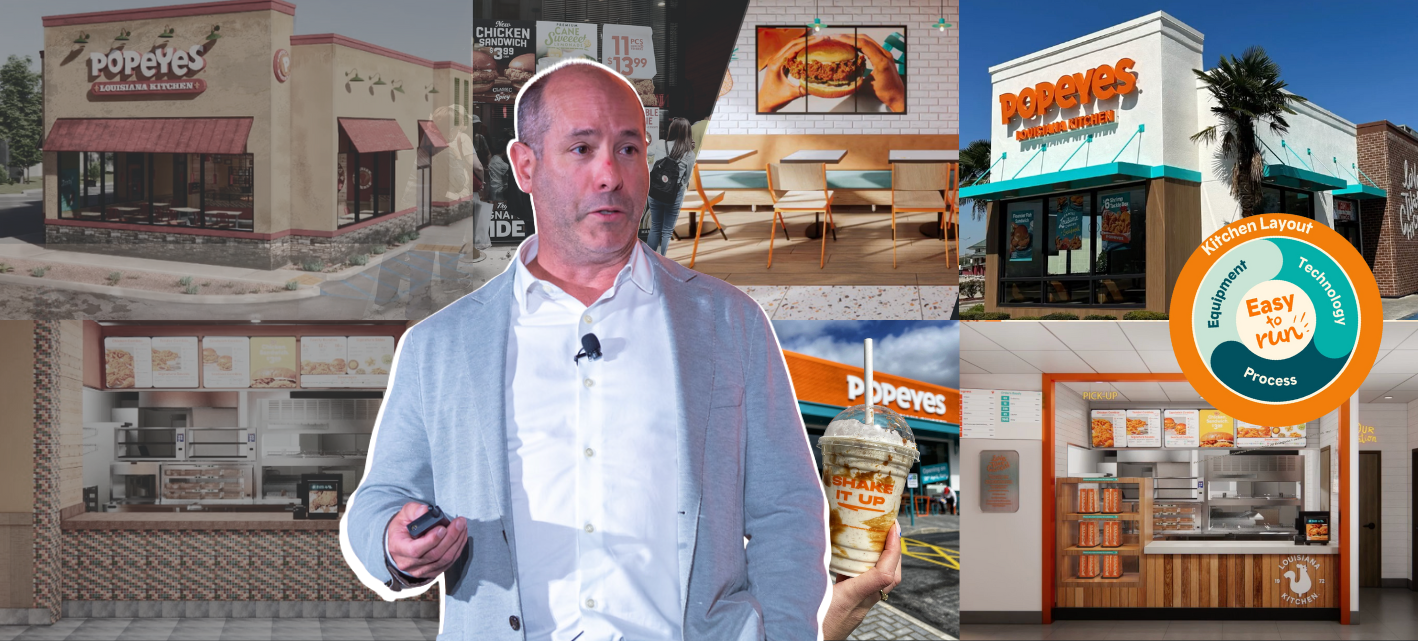In the eyes of the consumer, what are the most important features of a good drive-thru?
Going by the results of a WD Partners survey, it comes down to these three things: order accuracy, hot and fresh food, and intuitive way-finding.
In other words, drive-thrus have to deliver the same underlying experience as dine-in restaurants — just, you know, for customers in their cars, ordering through an intercom, next to a busy road.
“The basic fundamentals of the foundation of restaurants have to be right there before you can do anything else,” said Joanne Heyob, WD Partners’ SVP of Design and Operations, during a conversation at RestaurantSpaces in Austin.
It’s an important lesson in a world where the drive-thru has become increasingly important for QSR brands. As technology advances and workforce challenges abound, how can restaurants improve their drive-thru operations, and overall experience, without losing sight of those fundamentals?
To unpack this question, Heyob was joined by two QSR veterans: Pradnya Bendre, then Director of Design, Construction and Consumer Experience at KFC; and Minh Le, CIO at Checkers & Rally’s. Together, these experts combined their unique perspectives to envision what the perfect drive-thru might look like.
Improving Order Accuracy with AI
As many QSR brands have learned over the last few years, the next generation of drive-thrus will be powered by artificial intelligence.
Consider Checker’s and Rally’s embrace of the technology. Faced with high turnover in tough labor markets, Le’s team rolled out AI voice assistants at more than 350 drive-thru locations. The hope was not only to provide customers with a more consistent ordering experience, but also to make one of the company’s hardest jobs a little bit easier.
“I can’t stress enough how much employees love the automation, not having to worry about putting orders in anymore,” Le said. “Our order accuracy rate is around 95 to 96 percent, which is amazing.”
To design a restaurant that provides an efficient consumer experience, you first have to design a restaurant that provides an efficient employee experience. For Bendre, that means putting yourself in the employee’s shoes and trying to understand everything about their work: procedures, pain points, even how many steps they take in a shift.
“It’s not just simplification of the back-of-house, it's also future proofing our business based on our menu vision and what new products are being thought through for the brand,” she said. “Because once we put an asset down there, it's gonna be there for 10, 20 years.”
This makes it essential for design and operations leaders to stay in touch with their brand’s frontline workers. “I'm a big fan of just talking to people; that’s my biggest data source,” Bendre said. “Always listen to your operators. That's the starting point. The best insights and the best guidance comes from them, and that's what we follow.”
Happy Associates, Happy Customers
As they’ve evolved their respective drive-thru operations, Le and Bendre have learned a few best practices.
For brands pursuing automation, quality equipment and good bandwidth are essential. At the same time, there’s no one-size-fits-all option for brands in multiple regions with their own menus, pricing, and even dialects. Scaling the technology nationwide takes a deliberate, iterative approach, as well as the capacity to oversee implementation remotely.
“We can't have people be onsite across the country as we're rolling out 10, 15 a day,” Le said. “We had to figure out how to do it completely remotely — the training, everything — and have people be able to run with it. So that was a challenge.”
Another challenge lies in veteran franchise operators accustomed to their way of doing things. For Bendre, data is key to earning their buy-in for design and tech innovations.
“When you back up the changes that you want to bring about with some data points, it's always helpful,” she said, recalling her own conversations with KFC franchisees. “We spoke about reducing our steps, but then we really did the capacity calculations for each and every [piece of] equipment in the kitchen… and then we determined that this is the equipment that we need for these projected sales. Then layer on top of it the growth assumptions, and that's probably the kitchen that we need.”
Heyob echoed Bendre’s point, speaking to the need to provide a quality experience to the people who keep each location running.
“Happy associates mean happy customers, right?” she said. “The more you invest in your associates, the easier it's gonna be to achieve order accuracy, hot food, getting out the window, pride in the location. If you're constantly having to train those associates on the basic fundamentals, it's really hard to start to layer on different things that will continue to enhance the brand.”
Keeping a Human Touch
When Heyob asked the question of the hour — what does the ideal drive-thru look like? — Le and Bendre offered alluring and futuristic visions.
Both agreed that simplicity is everything: signage should be minimal and effective, with accessible entry points and intuitive navigation.
Le envisioned a world where beaconing technology identifies the customer as they pull up, empowering an AI assistant to greet them personally with recommendations based on past orders and loyalty program integration. (It may not even be a voice assistant, but a fully holographic team member.) Because it already recognizes the customer, it can charge their card frictionlessly — perhaps through license plate recognition or by pinging an app — allowing the guest to pick up their order and drive away without worrying about payment.
Even with high-tech solutions, a human touch is still vital. “I would love to see if we can give a glimpse into the kitchen, somebody waving at you,” Bendre said, stressing the need for brands to distinguish themselves by doing more than just delivering good hot food quickly and accurately. “We should not be blindsided by making it so comfortable and so convenient that we lose sight of how we can give them a much better experience.”
Heyob suggested that back-of-house automation might make it easier for team members to focus on that human factor. "You're freeing up employees to be able to feel less stress," she said. "They're now smiling when they hand you your food out the window, they're not talking to somebody else, taking an order and payment and doing all of that. There's not that multitasking going on.”
 Checkers' latest remodel, featuring AI at the drive-thru & BOH improvements
Checkers' latest remodel, featuring AI at the drive-thru & BOH improvements
Don’t Innovate Just to Innovate
As they wrapped up the conversation, the panelists shared a few final words of advice for brands hoping to bring their drive-thrus into the future.
“Don't innovate just to say you're innovating,” Le offered. “You're innovating because you're trying to solve a problem or bring business value into your brand.” He emphasized the importance of innovating collaboratively, with the entire company invested in the project and its outcomes. “Legal, marketing, operations, development, they all have to work in sync. Each one of them has a role to play.”
Bendre advised brands not to be creative without losing sight of their north stars. "Start thinking a little bit differently," she said. "Unknowingly, we follow a herd mindset. So I would caution you to really understand your brand and your consumer before you make any decisions, particularly on things that come at an investment.”
"For me, it's always stay close to the customer, always understand what they want," Heyob agreed. "Always talk to your crew members; they’re there day in and day out. They're the smartest people in your brand."

Posted by
Chain Restaurants Reimagined.
The Retreat to Reimagine Restaurant Development, Design + Technology.
April 12-14, 2026 | Miami, FL





-3.png)
-4.png)
-3.png)



Comments